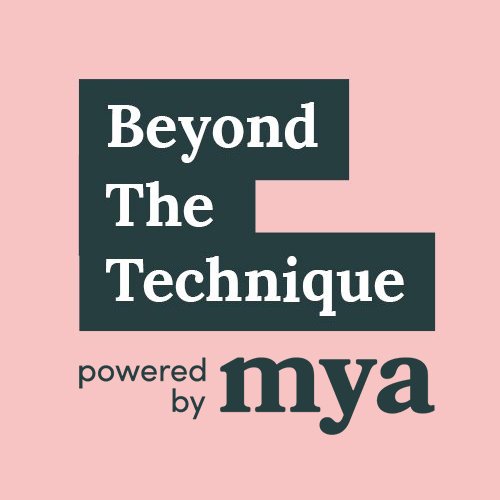Sexy Science Series Part 1: What Causes and Prevents Hair Damage
Who said science can’t be sexy? We certainly don’t think so, especially when it comes to the science of great hair! In fact, this is the first part in a three part series dedicated to the sexy science behind beautiful and healthy hair. To bring you this fun series, we partnered with Gina Cooper, Wella Master Color Expert and owner of Spectrum Salons in Park City, UT.
Gina is also a frequent guest on the Beyond the Technique podcast, so make sure to check out podcast episode 105, our first introductory episode with Gina to learn more about her background. Gina is super passionate about the science and chemistry that goes along with the beauty industry and for the first part of our series, we want to discuss what causes and prevents hair damage.
The Basics
So, where to begin? We started our conversation with understanding natural pH. pH stands for potential hydrogen and it measures the alkaline and acidic levels of a substance. The pH scale works similar to the Richter scale when measuring earthquakes. The range of a pH scale, is 0 – 14, with 7 being neutral. Any number below 7 is acidic and any number above 7 is alkaline. As you go up the scale, the next number is ten times the alkaline level as the number before. And as you move your way below 7, each number is ten times more acidic than the number above it. Got it? Good, let’s keep going!
The pH of our hair exists between a 4.5 – 5.5 range, which means even the simplest exposures to anything can cause damage. This is why it’s important to be mindful and consider the origin of hair pH, because if a product says it’s pH balanced, we have to make sure what pH it is referring to. It could be referring to the pH balance neutral, which is 7, but to your hair, skin and nails, that could be extremely damaging.
Basically, everything can cause damage to our hair. It’s a real bummer of the hair industry, but it goes to show how delicate our hair really is and why we need to take precautions as professionals to protect not only our own hair, but our clients’ as well.
So with that, we have the top six things that cause hair damage and tips for how to prevent that damage.
1. Color and Volumizing Products
Ammoniated or permanent hair color products typically have a high pH level, around an 11-12 pH. The reason the levels are so high is because we need to swell the hair open to either expose the natural melanin or pigment, or to soften the hair strand so it’s prepared for coverage. This doesn’t mean ammoniated hair color is bad, it just means you have to respect it while you are processing it, and make sure to shut it down and restore the pH after the process is complete.
Lightener is also another alkaline product to be aware of. Lighteners typically have a 12-13 pH level. Again, when working with these products, it’s important to respect the potential damage they can cause. Gina shared that with Wella, her salon practices a method called “slow and low” – which means that they use a low volume developer with a slow lightening process. This ensures that they are keeping the cuticle intact and slowly working their way through the melanin grains and dissolving them instead of blasting the cuticle wide open with a higher volume developer and attacking everything quickly. By going slow and low, it allows for a gentle opening and closing process.
Volumizing products also have high alkaline levels. Volumizing products are focused on making each strand look larger and more full. The alkaline is what helps create that swell of the hair strand, but be cautious when using them. One great way to get volume without as much product is to use a blow dryer. When using a blow dryer, it’s important to turn it around and let the exhaust fan pull some of the heat off as you are drying, or hit it with a cool shot, this will help shut the cuticle down. By using your blow dryer correctly, you can shut the cuticle down and keep it protected mechanically, rather than chemically with a volumizing product.
Obviously as hair professionals, we can’t avoid color, lightening and volumizing products, but we can be educated about them. These are all great tools to use, but it’s important not to abuse them.
But don’t be discouraged, not all products cause damage! Most acidic products can help restore the hair’s pH balance. Styling products such as a Moroccan oil containing water are really great. The lower pH level helps shut the cuticle down and make it lay smooth and flat and helps with a faster drying time.
2. Water
One of the biggest forms of hair damage is water. Water is a 7 on the pH scale and it causes hair to become 100 percent more elastic. When exposed to moisture, hair is 16 percent more swollen and two percent longer, which means that it can be stretched mechanically with our brushes up to 100 percent its dry length.
Ten years ago, we were taught that you should let your hair air dry to avoid the damage of heat from a blow dryer. But with technology and new scientific knowledge, we know there are safer ways to dry your hair so that we don’t let the water sit for too long and cause damage.
Unfortunately, we can’t avoid water in our hair completely, but there are ways to help prevent extensive damage. One way to do that is by investing in a brush or comb that is created to work through wet hair, and teaching your guests to properly address their hair after a shower with products, tools, and tension.
Gina always coaches her guests to give their hair a really good towel dry, then a rough dry with a blow dryer, being mindful to shoot the hot air down the cuticle strand, even if that means flipping their hair over. After getting about 60 percent of the water out, she then suggests running a round brush through it. This helps cut down on the tension so they are not stretching their hair when it’s sopping wet.
3. Hair Accessories
One of the most common forms of hair damage is caused by hair accessories. Gina often has clients that are trying to grow out a fringe, or are very active outdoors or at the gym, so they use headbands and bobby pins daily, causing a breakage along their hair line from the tension. Gina likes to coach her clients on accessories for their hair. One fun way to do this is with the cash wrap zone by your register. At your register, it’s always good retail practice to have little impulse purchases, these can include the hair accessories that are good for preventing damage, such as the fabric hair ties, or the beautiful bobby pins that have the old school clip on them, or a fun style of barrette.
4. Sleeping
Yep, even sleeping can cause hair damage. One of the best ways to prevent damage in your sleep is to reduce the amount of friction we are exposed to. Gina coaches her clients to get a silk pillowcase and give their hair a soft braid with a fabric hair tie before going to bed. The bonus to doing this is when you wake up in the morning, you can shake out the braids, add a little dry texture spray and have cute, beachy waves for the day!
5. Sun Damage
This one is really important! Both our skin and hair are equally susceptible to sun damage. So, just like we put UVA and UVB protection on our skin, we need to do the same for our hair. There are a lot of great hair products out there that help protect from the sun. Wella’s Eimi line offers protection as well as Paul Mitchell’sMarulaOil.
Often products will not say it on the label if it offers sun protection, so it’s a good idea to ask your distributor or rep for that information. This is especially important if you live in a state with lots of sunshine all year round.
6. Hot Hair Tools
Knowing the temperature at which your hair can withstand heat is really important. Many companies produce irons that don’t have gauges or dials that allow us to select a temperature. Dry hair can only withstand heat up to 392 degrees, and when wet, it can only withstand heat of 248 degrees. Those temperatures are pretty low when you consider how high some irons can get.
It’s important to evaluate the hot tools you use and make sure you purchase one that you can set the temperature. And make sure to educate your clients about this as well!
We hoped these little scientific nuggets help you feel empowered about the science behind being a stylist. The big takeaway from this is that as stylists, we may already be informed of these forms of damage, but we need to make sure we are informing our clients as well. Empowering our clients with knowledge helps them feel confident and safe when they sit down in our chairs.
Next up in the Sexy Science Series, we will be address strand testing. It’s going to be a good one! So, make sure to come back to our blog and check it out.
To listen to the original podcast with Gina Cooper, check out episode 113 on iTunes, Google Play, Spotify or your favorite podcast app!

